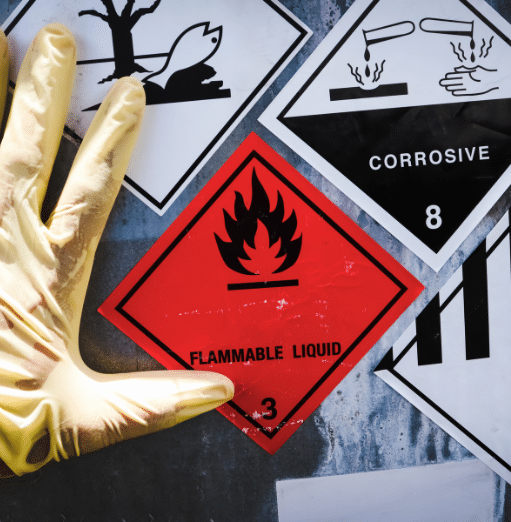Challenges in Hazmat Logistics and How to Overcome Them
Melton Logistics – 02/06/2025
The transportation of hazardous materials, usually known as hazmat loads, is a critical yet complex sector within the logistics industry. Millions of tons of crucial goods are transported this way every year to communities across the world. Ensuring safe and compliant hazmat shipping requires specialized knowledge, rigorous processes, and a commitment to safety.
What is Hazmat Freight Shipping?
Hazmat shipping involves transporting materials that pose risks to health, safety, or the environment. These materials can include flammable, toxic, corrosive, or even radioactive substances. Proper handling of hazmat freight requires adherence to stringent regulations set forth by the Department of Transportation (DOT) and other regulatory state agencies.
Types of Hazmat Loads
Hazmat freight encompasses a wide variety of essential goods and materials:
· Chemicals: Industrial chemicals, cleaning agents, or laboratory supplies.
· Gases: Compressed gases like propane, oxygen, or refrigerants.
· Explosives: Fireworks, ammunition, and other explosive materials.
· Flammable Liquids and Solids: Gasoline, alcohol, paint, or matches.
· Toxins and Infectious Substances: Pesticides, medical waste, or biohazards.
· Corrosive Substances: Acids, batteries, and materials that can cause severe chemical burns.

Due to the potential danger of hazmat freight shipping, each type of hazmat load has its own specific packaging, labeling, and transportation requirements, making this a highly regulated sector.
What Challenges Exist for Hazmat Logistics?
Managing hazmat logistics involves unique challenges, such as:
Regulatory Compliance: Hazmat shipments must comply with an array of local, national, and international regulations. Failure to adhere to these guidelines can result in fines, shipment delays, or other incidents.
Safety Risks: The nature of hazardous materials makes safety paramount. Mishandling, inadequate packaging, or improper storage can lead to leaks, spills, or explosions, endangering anyone that the load may come into contact with.
Training Requirements: Employees that handle hazmat shipments must undergo specialized training. This includes understanding proper labeling, documentation, and emergency response procedures when absolutely necessary.
Documentation and Paperwork: Hazmat shipping requires detailed documentation, including Material Safety Data Sheets (MSDS), shipping papers, and emergency contact information. Errors in documentation can disrupt the supply chain from minor slowdowns during routine stops or being placed out of service.
How Can Logistics Companies Manage Hazmat Load Challenges?
To overcome some of the challenges of hazmat logistics, prevention and proper training can provide a great base to build on.
Invest in Training: Provide comprehensive hazmat training for employees to ensure they understand regulations, safety procedures, and proper documentation that’s required for specific Hazmat loads.
Stay up to Date on Regulations: Keep on top of changing regulations at the local, national, and international levels. Leverage compliance management tools or partner with regulatory experts working in your regular lanes.
Utilize Technology: Adopt software solutions for tracking shipments, managing documentation, and ensuring compliance with hazmat regulations. Additional technology may be required for monitoring certain kinds of Hazardous materials.
Develop Emergency Response Plans: Have robust plans in place to manage potential incidents, including spill containment and communication protocols.
Route Optimization: Use route optimization tools to minimize transit times and avoid high-risk areas, ensuring safe and efficient delivery.
At Melton Logistics, we specialize in managing the complexities of hazmat logistics with a focus on safety, compliance, and efficiency.
Melton Logistics stands ready to help businesses navigate the complexities of hazmat shipping and specialized freight. Contact us today to learn how we can support your logistics needs.
